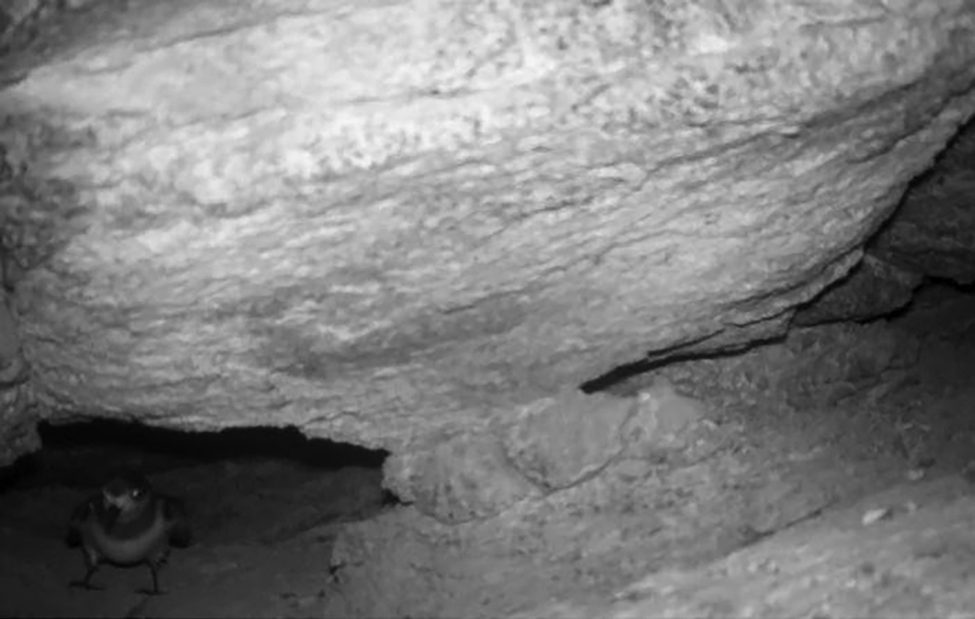Hornby's storm petrel Oceanodroma hornbyi is a species endemic to the Humboldt Current Region of South America and one of the least known seabirds. Its population size is poorly documented, having been estimated in 2007 at 637,000–1,011,900 individuals, through open ocean counts (Spear & Ainley, 2007, Ornithological Monographs, 62, 1–77). The species is categorized as Near Threatened on the IUCN Red List as the known area of its breeding colonies is small, and the species may be declining as a result of light pollution. In Chile, the species is categorized as Vulnerable, and its range includes northern coasts from the Tarapacá to the Atacama Regions.
The only known colony of Hornby's storm petrel is in Pampa de Indio Muerto in the Atacama Desert, Chile, at 1,100 m, 75 km from the coast. Two breeding sites were recently reported in Chile: a single nest cavity at Salar de Quiuña, Tarapacá Region, and an individual leaving a cavity at Salar de Navidad, Antofagasta Region (Medrano et al., 2019, Revista Chilena de Ornitología, 25, 21–30). These breeding records are in natural shallow cavities in gypsum outcrops. Here, however, we describe the first record of Hornby's storm petrel breeding in a different environment.

Hornby's storm petrel Oceanodroma hornbyi captured by a camera trap.
On 13 February 2021, during research on rodents in a landscape dominated by abundant and steep rocky ravines with sparse vegetation, 12 km from the coast, at 1,050 m, c. 35 km south of Antofagasta, we recorded Hornby's storm petrel on a camera trap. The individual visited the nest, inside a small rocky cave, frequently, consistent with parental care. The main threats to the species in this area are loss and degradation of habitat and light pollution from mining, and solar and wind energy projects. In nearby areas we also recorded additional evidence of Hornby's storm petrel, in the form of feathers and faeces, suggesting a potential breeding colony.

